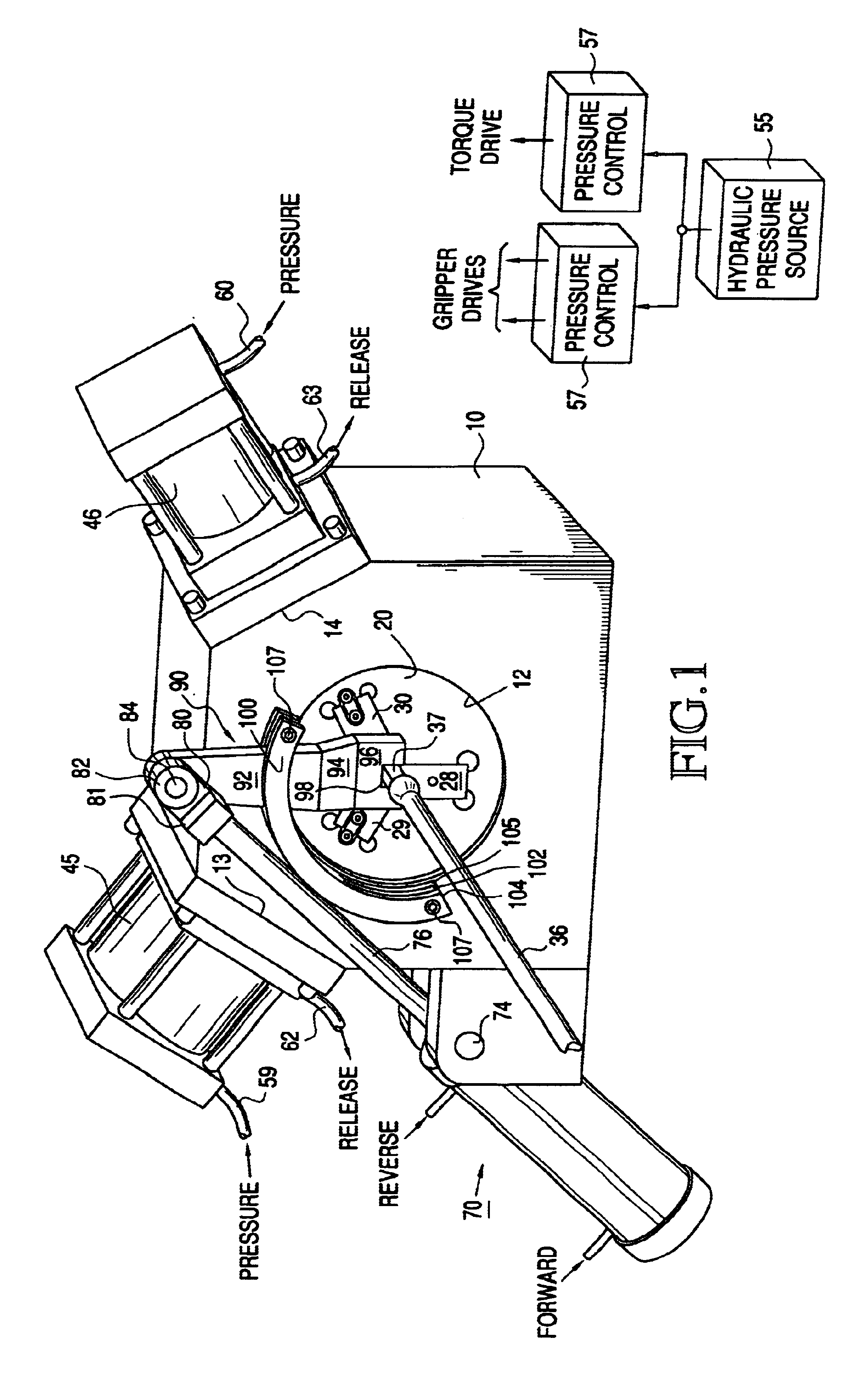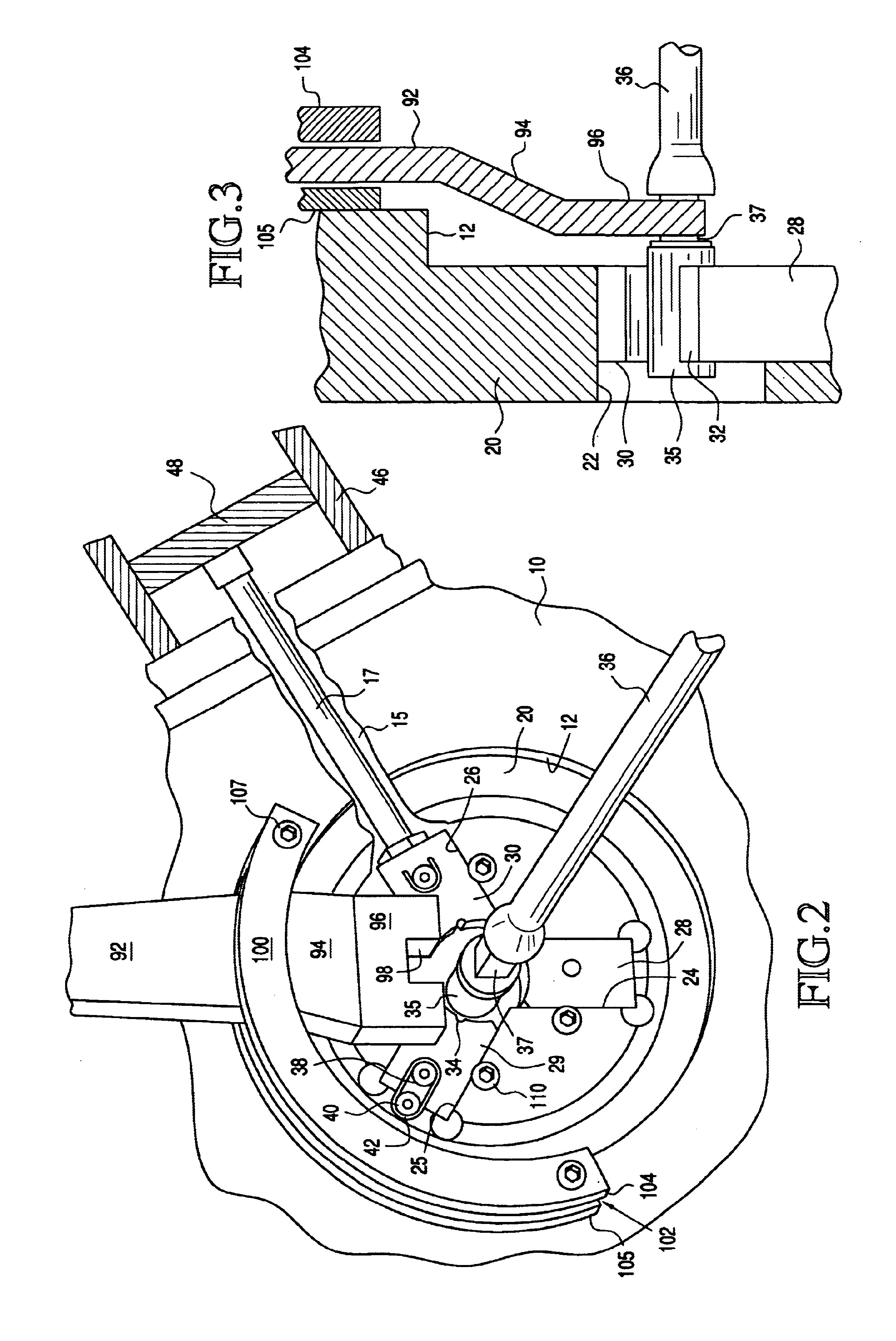Threaded connection engagement and disengagement system and method
a technology of connecting system and disengagement system, applied in the field of systems and methods, can solve the problems of fatigue life failure, early fracture or other failure of the connection, and introduce relative displacement between parts that tend to grow, so as to improve the operating life, facilitate and reliable disengagement, and simple procedure
- Summary
- Abstract
- Description
- Claims
- Application Information
AI Technical Summary
Benefits of technology
Problems solved by technology
Method used
Image
Examples
Embodiment Construction
[0026]A system in accordance with the invention, referring now to FIGS. 1-4, is structured on a massive and integral base block 10, typically of steel, and therefore adequate to withstand the high forces that are generated in operation. The base block 10 includes, in one wall, a central recess 12 which is concentric with the central axis of the coupling and sucker rod combination that is to be engaged or disengaged. The two top corners 13, 14 of the generally rectangular base block 10 are oppositely angled and include interior bores 15 (FIG. 2) within which drive elements 17 are radially positioned relative to the central axis. Within the central recess 12, a reference plate 20 for gripper elements is mounted transverse to the central axis and itself includes a central bore 22 along the central axis and concentric therewith. The reference plate 20 is of sufficient thickness to withstand high stresses and the central bore 22 is of adequate diameter to receive any sucker rod coupling ...
PUM
| Property | Measurement | Unit |
|---|---|---|
| angle | aaaaa | aaaaa |
| angle | aaaaa | aaaaa |
| outer diameters | aaaaa | aaaaa |
Abstract
Description
Claims
Application Information
 Login to View More
Login to View More - R&D
- Intellectual Property
- Life Sciences
- Materials
- Tech Scout
- Unparalleled Data Quality
- Higher Quality Content
- 60% Fewer Hallucinations
Browse by: Latest US Patents, China's latest patents, Technical Efficacy Thesaurus, Application Domain, Technology Topic, Popular Technical Reports.
© 2025 PatSnap. All rights reserved.Legal|Privacy policy|Modern Slavery Act Transparency Statement|Sitemap|About US| Contact US: help@patsnap.com



